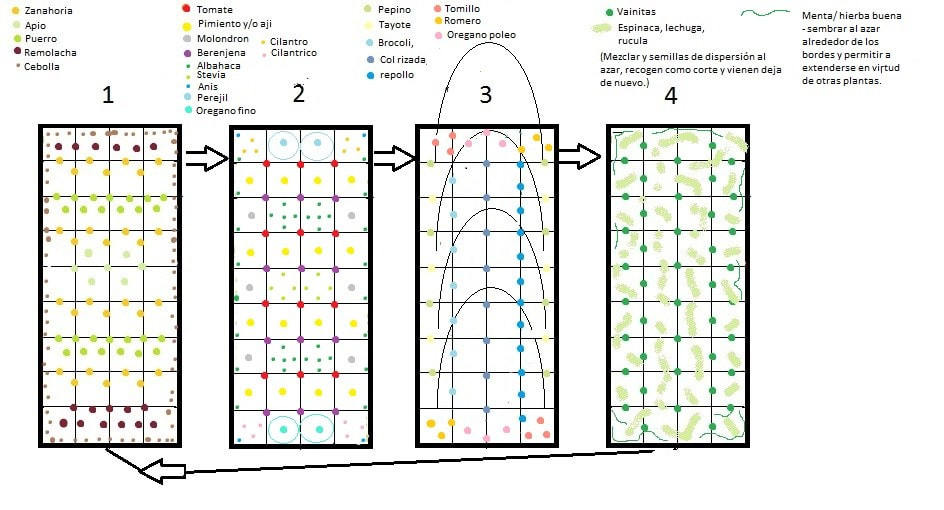|
One of the key jobs for an organic gardener is taking care of the soil. Without the delicate soil ecosystem, plants would not be able to grow, and we would not be able to feed ourselves from our gardens. Crop rotation is one of the gardening practices which allows us to take care of the soil and keep our growing areas healthy and productive in a sustainable way. What is Crop Rotation?
Crop rotation is the practice of making sure that certain 'families' of edible, annual plants are not grown in the same place year after year. If, for example, we have grown tomatoes in a certain place one year, we should not grow them there again the following spring but rather, should plant them in a different location. Why is Crop Rotation a Good Idea? There are a number of different reasons why it is a good idea to rotate our annual crops and move them around each year. Crop rotation is a good idea because:
Creating a Crop Rotation Plan for Your Garden As you develop more experience as a gardener you will learn that things do not always go according to plan and even the most organised of gardeners will usually have to adapt to changes and be flexible. That said, even if things do shift and change over time, it is still a good idea to create a crop rotation plan. Not all annual crops need to be included in a crop rotation plan. It is most important to consider the following plant families: the tomato/potato family, the onion family, the cabbage family (and other leafy greens), and legumes (peas and beans). Other things can often be fitted in around and amongst these core families. The first three of these families can all suffer from diseases if grown in the same place for more than a year. The cabbage family and other leafy greens will tend to heavily deplete nutrients, especially nitrogen. The legumes themselves will not tend to suffer if they are not moved, but their nitrogen fixing capabilities mean that they can be helpful when planted in the area vacated by cabbages and other leafy greens grown there the year before. A crop rotation plan should be flexible. There is room for experimentation, and for the creation of polycultures (companion planting) within a crop rotation scheme. With gardening, there is rarely one perfect scheme to follow. It is important to create a plan that works well for you, and for where you live. By all means, find and follow an example crop rotation plan – but always adapt this to suit
0 Comments
Leave a Reply. |
GROW ORGANIC!
|
|


 RSS Feed
RSS Feed




